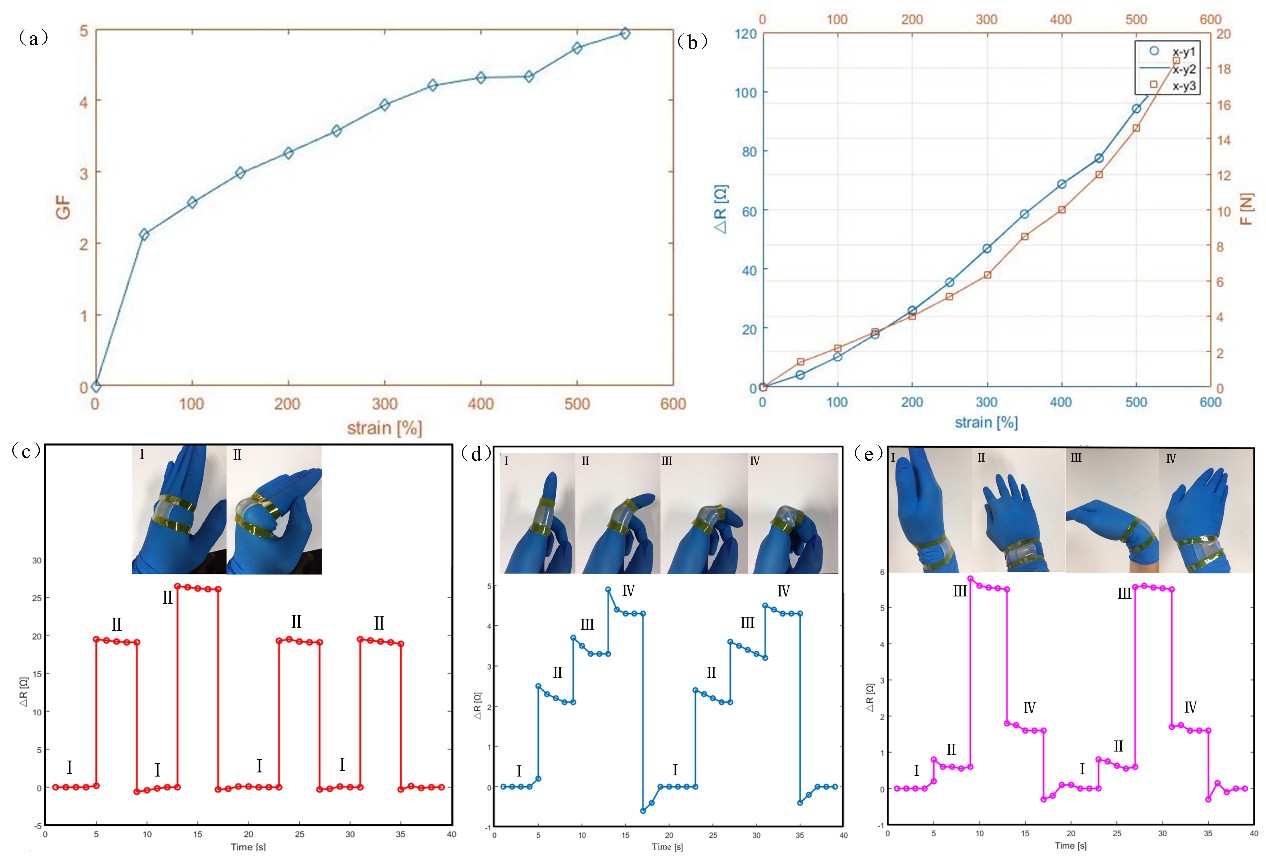Scientists Improve Sensitivity and Stretchability of Room-Temperature Liquid Metal Based Sensor by Optimizing Microchannel Structure Design
Scientists have developed a room-temperature liquid metal based super-stretchable sensor, with the merit of facile fabrication, low cost, great stretchability, high repeatability and GF (gauge factor) as great as 4.95. It potentially promotes the liquid metal based sensors to next stage.
A research team led by Prof. WANG Lei at the Shenzhen Institutes of Advanced Technology (SIAT) of the Chinese Academy of Sciences, analyzed the dilemma of room-temperature liquid metal based sensors’ working mechanism, and applied a new strategy to overcome the difficulty, improved the sensitive, repeatable, and stretchable performances of liquid metal based sensor.
Flexible sensors are the research hotspots in the fields of wearable medical and robotic applications. Flexible strain sensor has become the key research direction for the development of intelligent devices. It has broad application prospects in the fields of human-computer interaction systems, electronic skin and human motion behavior monitoring systems, etc. Among then, stretchability, sensitivity, stability, reliability and comfort are the important performance parameters of strain sensors. How to achieve high stretchability while greatly improving sensitivity and repeatability is still a challenge.
Prof. WANG and his colleges proposed optimizing the microchannels structures by finite element analysis (FEA), designed and fabricated the sensor accordingly. The experimental results revealed that the sensor could be stretched to 550%, twisted 270o, and bended 180o. The GF could reached as high as 4.95 when the strain ultimately reached 550% and the repeatable error is less than 0.1%. Applications of precision detection of the joints, fingers, and wrists motion had also been conducted and showed excellent results, which shows great potential of their applications in flexible wearable electronic devices.

Fig. a) The relationship between GF and strain. (b) The relationship of resistance change and strain (blue lines), x-y1 and x-y2 signify first stretchability and fiftieth stretchability. Photograph of relationship of tensile force and strain (orange line), x-y3 signify the condition of the tensile force and strain. Photographs of this sensors attached on the joint (c)/fingers (d)/wrists (e) of different motions, and corresponding resistance change. (Image by Prof.WANG)
CONTACT:
ZHANG Xiaomin
Email: xm.zhang@siat.ac.cn
Tel: 86-755-86585299
| Download the attachment: |
|
|